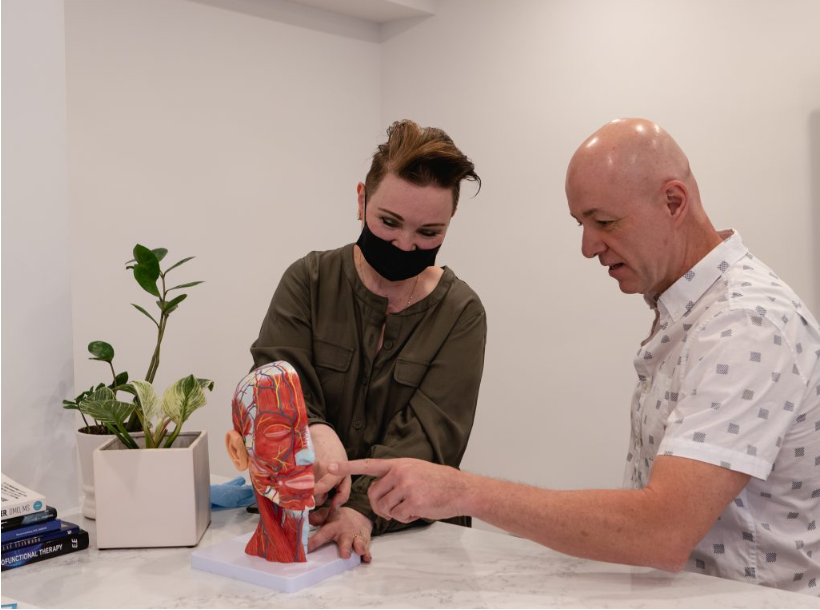
Breathing New Life Essential Exercises for Mouth Breathers
Breathing is an automatic process, but for many people, mouth breathing has become a habitual way of taking in air. Whether due to nasal congestion, allergies, or simply unconscious habits, breathing through the mouth instead of the nose can lead to a variety of health issues, such as dry mouth, poor sleep, and even dental and facial problems. Fortunately, with some targeted exercises, mouth breathers can retrain their breathing patterns and enjoy the many benefits of nasal breathing. Exercises For Mouth Breathers
The Importance of Nasal Breathing
Nasal breathing is the body’s natural method of breathing. The nose filters and humidifies the air, preventing harmful particles and allergens from reaching the lungs. It also regulates airflow, making it easier for the body to absorb oxygen. When we breathe through the nose, the diaphragm is activated, helping to draw in a full, deep breath. Nasal breathing also produces nitric oxide, which helps expand the airways and improves oxygen absorption.
Mouth breathing bypasses these natural processes, often leading to dry mouth, bad breath, and poor oxygenation. Over time, chronic mouth breathing can also contribute to snoring, sleep apnea, and even changes in facial structure, including a narrow jaw and misaligned teeth. The good news is that mouth breathers can retrain their bodies to breathe more efficiently through the nose through simple, targeted exercises.
Essential Exercises for Mouth Breathers
Here are several effective exercises designed to help mouth breathers transition to nasal breathing and restore optimal breathing patterns:
1. Nasal Breathing Awareness
The first step in overcoming mouth breathing is simply becoming aware of your breathing habits. Many people breathe through their mouths unconsciously, especially when distracted or during physical activity. Increasing your awareness can help you make the necessary changes.
How to practice:
- Throughout the day, focus on keeping your lips gently sealed and breathing in and out through your nose.
- Set reminders on your phone or use sticky notes to prompt you to check in on your breathing.
- If you catch yourself breathing through your mouth, gently close your lips and resume nasal breathing.
This exercise encourages you to practice nasal breathing throughout the day, helping to reprogram your habits over time.
2. Lip Sealing Exercises
Lip sealing exercises help strengthen the muscles around your lips and train your body to keep your mouth closed while breathing. This simple technique can be especially useful at night, when mouth breathing tends to occur more frequently during sleep.
How to practice:
- Sit comfortably with your mouth closed and teeth slightly apart.
- Gently press your lips together without straining.
- Breathe slowly and deeply through your nose while keeping your lips sealed.
- Practice for 5-10 minutes, two to three times per day.
This exercise helps form the habit of keeping your mouth closed while breathing, reducing the tendency to mouth-breathe.
3. Tongue Posture Training
Proper tongue posture plays a significant role in nasal breathing. When the tongue rests on the roof of the mouth, it helps maintain an open airway and keeps the mouth closed. Improper tongue posture, such as resting the tongue on the floor of the mouth or pushing it forward, can contribute to mouth breathing.
How to practice:
- Close your mouth and place the tip of your tongue on the roof of your mouth, just behind your upper front teeth.
- Keep the tongue in this position throughout the day, including while speaking, swallowing, and resting.
- Aim to make this posture a natural habit.
This exercise encourages the correct tongue position, which supports nasal breathing and helps prevent mouth breathing.
4. Diaphragmatic Breathing
Diaphragmatic breathing, or deep belly breathing, is an important aspect of nasal breathing. It involves breathing deeply into the diaphragm rather than shallow chest breathing, which often occurs when mouth breathing. Nasal breathing encourages this deeper form of breathing, which is more efficient and provides greater oxygen intake.
How to practice:
- Sit or lie down in a comfortable position.
- Place one hand on your chest and the other on your abdomen.
- Close your mouth and breathe in deeply through your nose, allowing your abdomen to rise as your diaphragm expands.
- Exhale slowly through your nose, allowing your abdomen to fall.
- Focus on making your breath slow, deep, and controlled.
By practicing diaphragmatic breathing, you can improve your lung capacity and make nasal breathing feel more natural.
5. Nasal Breathing During Exercise
Breathing through the nose while exercising can be challenging at first, especially for those who are used to mouth breathing during physical exertion. However, training yourself to breathe through your nose during light exercise can help strengthen the respiratory muscles and improve overall breathing efficiency.
How to practice:
- Begin with light activities, such as walking or yoga.
- Focus on inhaling and exhaling through your nose during the entire workout.
- If you find yourself out of breath, slow down the intensity and focus on maintaining nasal breathing.
This exercise strengthens your respiratory system, making it easier to breathe through your nose during more intense physical activity.
Conclusion
Transitioning from mouth breathing to nasal breathing may take time, but with consistent practice and dedication, it is entirely achievable. By incorporating these essential exercises—such as nasal breathing awareness, lip sealing, tongue posture training, diaphragmatic breathing, and nasal breathing during exercise—mouth breathers can restore healthier, more efficient breathing patterns. With patience and persistence, you can improve your overall health, enhance sleep quality, and enjoy the numerous benefits of nasal breathing.



